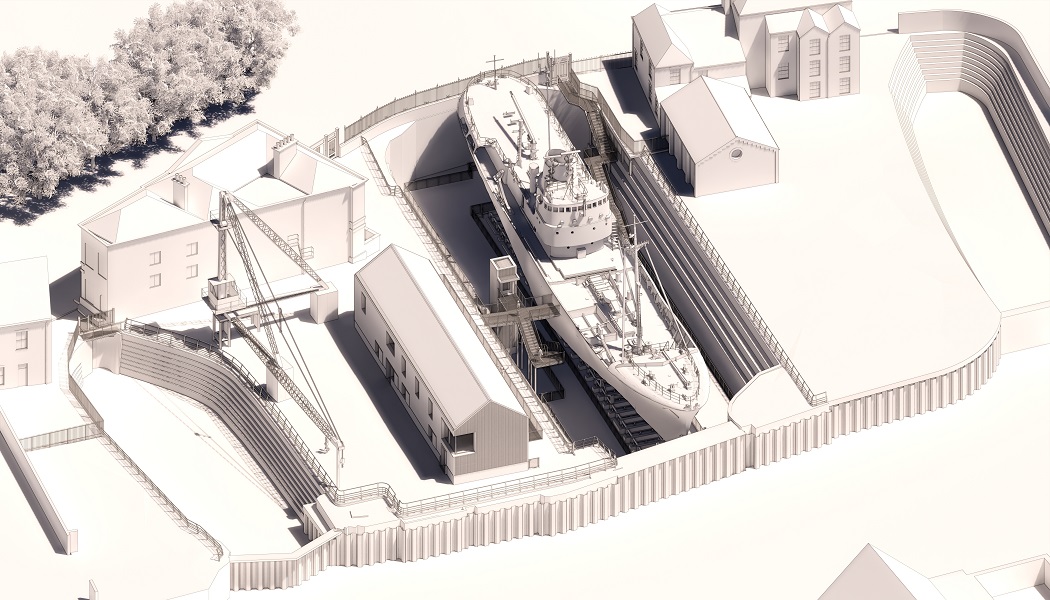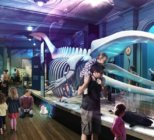Passivhaus is a term that may not mean a huge amount to you unless you’re an architecture aficionado or an avid viewer of Channel 4’s Grand Designs. Put simply, the stringent energy efficiency standard developed in Germany results in buildings that require very little, if any, conventional heating.
A site aiming for this hallowed status is a new maritime experience set for completion by 2023 in Hull’s historic North End Shipyard. Part of the Hull Maritime project, the venue will be home to Hull’s only remaining sidewinder trawler, the Arctic Corsair, and occupy a dockside spot adjacent to the last Scotch Derrick crane in the city.
The 500m² building is being designed by architecture practice Purcell, and will use a system of heat exchangers to collect heat leaving the building as a means to warm the fresh air entering the space. The same system can also be utilised to cool the site in summer.
On the coldest of days, with no sun to warm the building, it is expected that the entire exhibition area could be heated using less than 1.3 kW per hour – equivalent to the power used by a small domestic plug-in heater. Compared to a typical new building this could deliver savings in energy consumption of up to 90%.
What does Passivhaus mean?
The definition of Passivhaus, according to the Passivhaus Institut, is “a building in which thermal comfort can be achieved solely by post-heating or post-cooling the fresh air flow required for a good indoor air quality, without the need for additional recirculation of air”.
To achieve the Passivhaus Standard in the UK typically requires:
- accurate design modelling using the Passive House Planning Package
- very high levels of insulation
- extremely high-performance windows with insulated frames
- airtight building fabric
- ‘thermal bridge free’ construction
- a mechanical ventilation system with highly efficient heat recovery
The new two-storey site will be equipped with a visitor centre and exhibition zones dedicated to telling stories of Hull’s once buoyant trawling industry. The council hopes the North End Shipyard venue will attract 135,000 visitors each year.
Sharing his enthusiasm for the project, Owen Plummer, senior architect at Purcell, says the scheme means a “significant yet overlooked area of the city will be rejuvenated and brought back into use as a visitor destination in its own right and as part of the wider interpretation of Hull’s maritime heritage”.
The building’s carbon-conscious design aligns with Hull City Council’s broader environmental focus, with the organisation having recently unveiled an ambitious 2030 Carbon Neutral Strategy.
Cllr Daren Hale, Hull City Council’s portfolio holder for economic investment, regeneration, planning, land and property, says the plans evidence this “continued commitment to sustainability”.
The new maritime attraction, he adds, will “not only showcase the city’s many maritime stories but also achieve the best energy efficient standards”.
More information on the Hull Maritime project can be found here.










